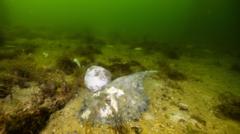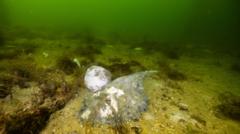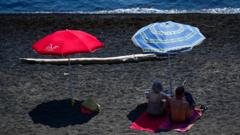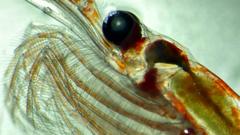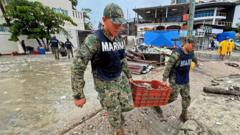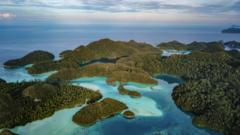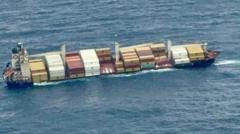The 2021 X-Press Pearl cargo ship disaster off Sri Lanka has left a toxic legacy that persists four years later, as volunteers and scientists uncover the environmental toll of billions of plastic nurdles and hazardous materials on local wildlife and communities.
Environmental Aftermath: Long-lasting Effects of the X-Press Pearl Disaster in Sri Lanka
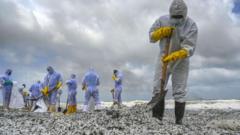
Environmental Aftermath: Long-lasting Effects of the X-Press Pearl Disaster in Sri Lanka
Four years post-disaster, the X-Press Pearl cargo ship continues to haunt Sri Lanka's beaches and marine life, highlighting grave ecological consequences and ongoing pollution issues.
Four years have passed since the X-Press Pearl cargo ship sank off the coast of Sri Lanka, marking the largest plastic spill ever recorded. Volunteers have tirelessly sifted through beaches to remove toxic plastic pellets, known as nurdles, from the sand. Billions of these granules are believed to have washed ashore alongside engine fuel, nitric acid, and other hazardous materials, posing threats to marine life and coastal ecosystems.
While initial damage was evident, scientists are now expressing concerns that the environmental impact may endure for much longer than originally anticipated. David Megson, a researcher from Manchester Metropolitan University, noted that the remaining microplastic granules are becoming "chemical sponges," accumulating further pollutants from the ocean.
The X-Press Pearl encountered problems shortly after departing from Dubai for Malaysia. A nitric acid container began leaking, but the crew was refused permission to offload it at ports in Qatar and India. The situation escalated while passing Sri Lankan waters, ultimately leading to a catastrophic fire and the vessel sinking, releasing toxins into the ocean just nine nautical miles off the southwestern coast.
Muditha Katuwawala, an environmentalist and founder of the Pearl Protectors NGO, recalls the initial clean-up efforts, where volunteers collected hundreds of kilos of nurdles daily. As cleanup efforts tapered off, they found nurdles buried in the sand, making them increasingly hard to retrieve. Scientists continued to monitor the environmental effects, discovering that contaminated nurdles and marine life samples revealed alarming levels of toxic metals linked to the ship's cargo.
Local fishermen have also felt the profound impact of the disaster, reporting a drastic decline in fish populations since the incident occurred. Fisherman Jude Sulanta expressed distress, stating, "Our lives have turned upside down... We've never had the same amount of fish that we used to catch."
The ship's owners, X-Press Feeders Ltd, claim they have invested over $130 million to manage the disaster response and clean-up, but the Sri Lankan government argues this is insufficient for the long-term damage, seeking a legal increase in compensation. Recently, Sri Lanka's Supreme Court ordered the company to pay an initial $1 billion; however, the company expressed disappointment, highlighting an ongoing cap on total compensation.
Amid ongoing struggles, environmental economist Prof. Prashanthi Guneeardena estimates losses due to wildlife loss, tourism, and health impacts at over $6 billion, attributing long-term health risks to toxic emissions generated during the fire. Meanwhile, many local fishermen are considering leaving the fishing trade and even the country, driven by despair over a lack of justice and a fading livelihood.
The sea remains vital for Sri Lanka, not just economically but culturally; it feeds the population and attracts tourists. Yet as the ramifications of the X-Press Pearl spill become starkly apparent, many residents grapple with uncertainty over the future of their traditions and way of life.




